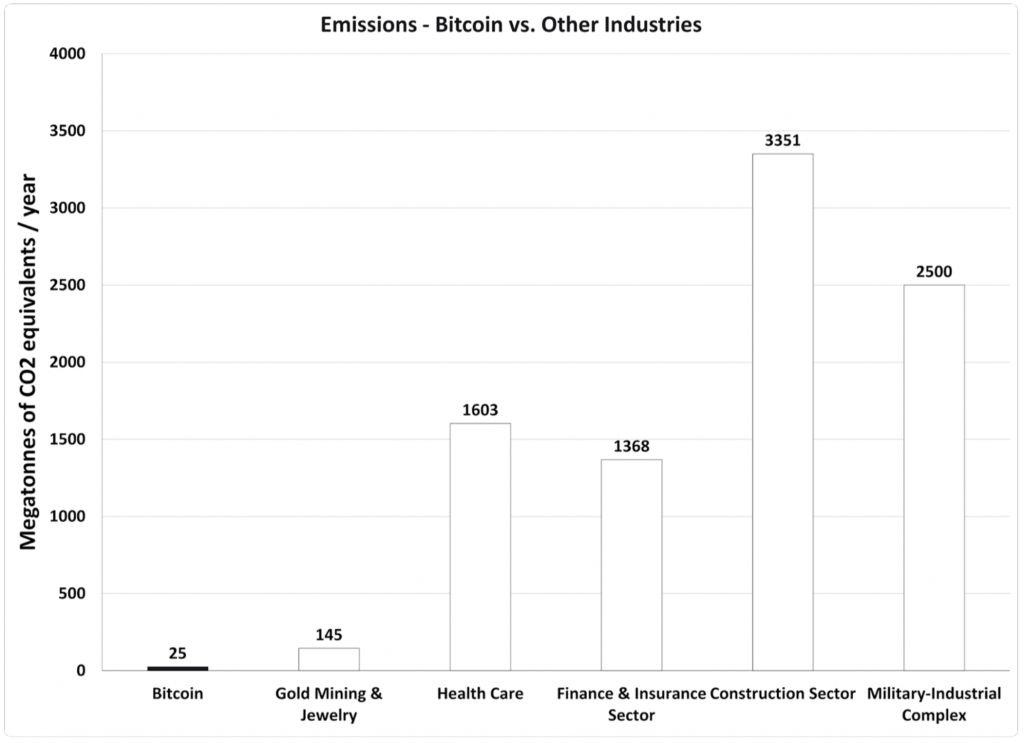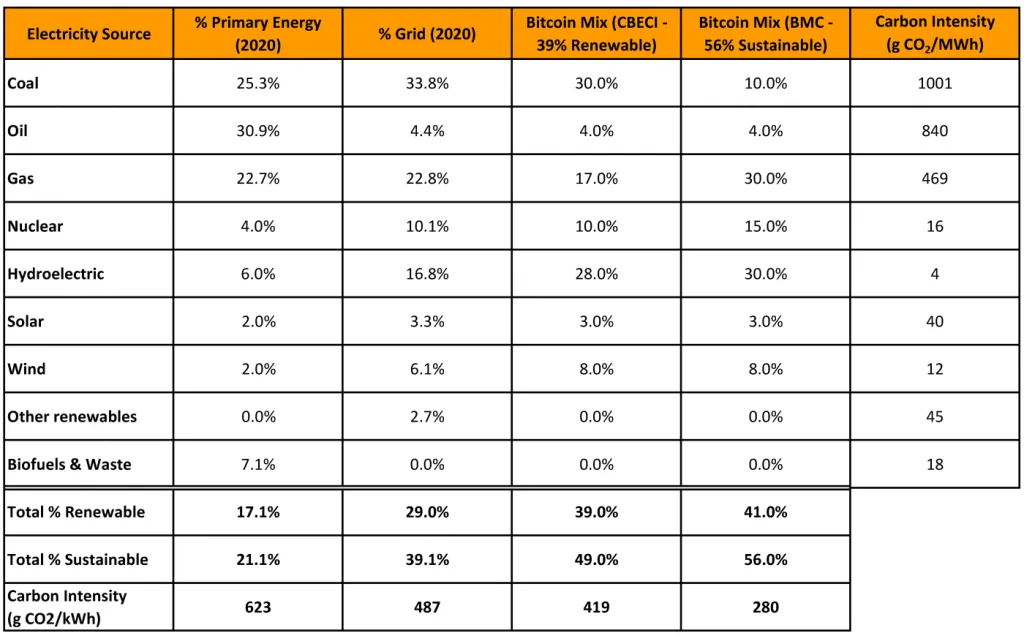As awareness of Bitcoin has grown, so too have concerns about its energy usage. In this note we take a look at the scale and composition of Bitcoin’s energy consumption, show how Bitcoin miners are already acting as marginal buyers for stranded energy producers, and explore how Mawson is working to make Bitcoin mining a key part of our clean energy future.
Highlights
- Bitcoin’s current yearly electricity use is ≈90TWh1 per year. For comparison, gold mining uses about 131TWh, and the total amount of energy supplied globally in 2020 was 166,000 TWh2.
- Bitcoin mining emits ≈25 Megatonnes (Mt)3 of greenhouse gas (GHG) per year, equivalent to about 0.05% of the 48,9284 Mt of global emissions in 2018.
- More than 75 percent of miners use renewable energy. By buying stranded or excess power, Bitcoin miners can support the transition to cleaner energy.
- Mawson is accelerating this clean energy transition by developing Modular Data Centres that can be installed at the source of underutilised energy, improving the viability of solar and wind projects or making use of methane that would otherwise be vented.
The Mawson View
Mawson Infrastructure Group believes in the future of Bitcoin as a contributor to positive social, economic, and environmental change. Our commitment to the mining industry – one of the most volatile and competitive industries in technology – is testament to this faith.
We also recognise that investors are committed to ensuring that their portfolio aligns with their values. We have prepared this memo to address common questions that investors have about energy, emissions, and the environmental impact of Bitcoin in a global context.
We also hope to give insight into the nature of competition in the industry, Mawson’s position as an innovation leader, and what might be in store over the next decade.
WE ARE LIVE
NASDAQ: MIGI
A Primer on Energy, Electricity & Emissions
Bitcoin Emissions in a Global Context

As a result of recent shifts in the location of mining activity, the majority of Bitcoin’s energy is now coming from clean energy sources, and carbon intensity has dropped substantially below the global average.

Bitcoin is 65% less carbon intensive than the world’s primary supply, and 40% less intensive than the world’s electricity grid.
Bitcoin’s Energy Use in a Global Context
Global Stranded and Curtailed Energy
Mawson as an Innovation Leader
At Mawson Infrastructure, we believe that Bitcoin can contribute to a future in which we can provide clean, sustainable and abundant energy for everyone. Our focus is on building the technology that will accelerate this process.
Innovation starts with people, and it is through our innovative spirit that we have built a business around the development of a mining solution that can go anywhere in the world, with investment-grade reliability and uptime. Our Modular Data Centres (MDCs) provide state-of-the-art mining technology in a modular, highly mobile form that can go wherever it’s needed.
By employing cutting edge techniques, like Liquid Immersion Technology (LIT), in the design of our MDCs, we have been able to dramatically increase their efficiency, footprint and resilience. Modularity is not just a matter of convenience — for Mawson, mobility is critical for positioning Bitcoin mining as a flexible buyer of last resort for renewable energy producers.
GET IN TOUCH
NASDAQ: MIGI
Footnotes
[1] Cambridge Centre for Alternative Finance, August 2021, “Cambridge Bitcoin Electricity Consumption Index”, www.cbeci.org
[2] International Energy Agency, 2020, “Key World Energy Statistics 2020”, page 6, bit.ly/3B4q1nR
[3] McCook H., 2021, “Bitcoin’s Energy Use Compared to Other Major Industries”, bit.ly/3B4C4Bu
[4] World Resources Institute, 2021, “CAIT Data Explorer”, bit.ly/3kmVryW
[5] BP, 2021, “BP Statistical Review of World Energy”, 2021, page 63, on.bp.com/3zfufsi
[6] Intergovernmental Panel on Climate Change, 2012, “Renewable Energy Sources and Climate Change Mitigation”, page 190, bit.ly/3gtB168
[7] McCook H., 2021, “Bitcoin’s Energy Use Compared to Other Major Industries”, bit.ly/3B4C4Bu
[8] Cambridge Centre for Alternative Finance, 2020, “3rd Global Cryptoasset Benchmarking Study”, pages 26-28, bit.ly/3ydVl1A
[9] University of Oxford, 2021, “OurWorldInData – Global Primary Energy Consumption by Source”, bit.ly/3ybXGKf
[10] Bitcoin Mining Council, 2021, “Global Bitcoin Mining Data Review – Q2 2021”, slide 6, bit.ly/3DgoPiY
[11] McCook H., 2021, Bitcoin’s Energy Use Compared to Other Major Industries, bit.ly/3B4C4Bu
[12] Bitcoin Mining Council, 2021, “Global Bitcoin Mining Data Review – Q2 2021”, slide 7, bit.ly/3DgoPiY
[13] World Bank, 2020, “Global Gas Flaring Tracker Report”, bit.ly/2XMwTYw
